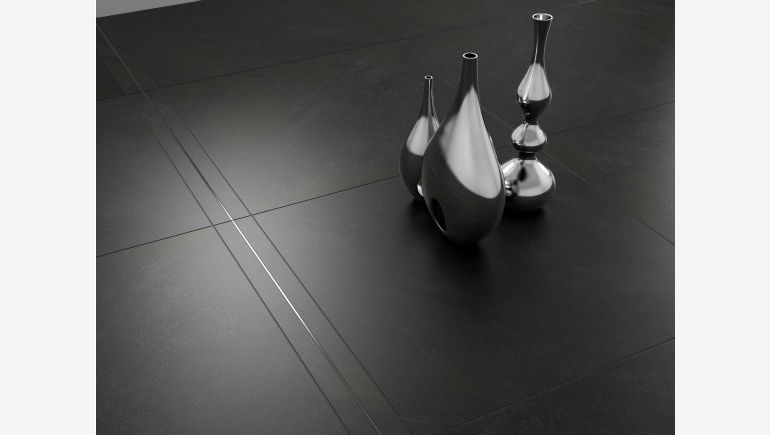Introductory remarks about ceramic
Ceramic's process of production is mixing right raw materials, forming them and firing. Its type is dependent on the temperature, in which it is fired. Structural is often processed in the temperature of 900°C, and ceramic tiles are usually fired in 1,000-1,300°C.
It is important to note the division. From ceramic we make elements used to erect walls, roofing tiles, facade linings, tiles and sanitary equipment. In office buildings we usually use ceramic materials from the last two groups – explains Paweł Majewski, the architect from APA Wojciechowski studio.
Where to use, where not?
When we think about using ceramic in office objects, we hear about already mentioned furnishing of sanitary rooms and ceramic tiles. Whis is this material not used more widely?
We do not design ceramic walls in office buildings because of the resultant characteristics of this material. In this case, deciding characteristics are capillary ones (because of the zones exposed to a risk of dampness - in restrooms of in underground parts), economic factor and the organisation of the construction - we try to unify construction materials used, in order to make logistics at the site easier – says Paweł Majewski.
On the market there are also ceramic roof tiles, widely used in residential constructions. In the case of office real estates this solution is used very rarely. It is usually connected to the historic context of the place.
There is a similar situation with ceramic facades. In APA Wojciechowski we have been designing office buildings since the beginning, and we have designed our first office building with a ceramic facade only two years ago. What is interesting, but not unique, is that in this case ceramic on the facade was not made as a connection to the past – informs Paweł Majewski.
Ceramic tiles - a solid product
A ceramic product which is incredibly popular are ceramic tiles, especially gres tiles, glazed and unglazed. They can be used in practically any part of an office building, but while remembering, that experts recommend different types for different purposes. It is dependent, among other things, on the risk of the product being exposed to devastation and high frequency utilisation. Tiles, used in halls, staircases, restrooms and other usable spaces should be the most durable.
As it turns out, using ceramic tiles in an office building has a lot of assets. For the architect it is very important that the materials used are natural ones. Glass, stone, wood and ceramic are the materials which have been used by the constructors centuries ago. They are user-friendly, esthetic, we can also intentionally use their characteristics, such as durability, hygienic values or resistance to wearing out – admits Paweł Majewski.
Besides natural origin, which makes ceramic tiles resistant to mould and fungi, the product is easy to clean and very hygienic. It is a huge asset for the material used in restrooms, where it is necessary to often clean the surfaces - especially in office objects, where sanitary rooms are used everyday by many people.
Other assets are high durability and low price. They can hold massive loads, and when damaged, the fractured element can be quickly replaced, without the need to replace everything. Finally, it is important to remember esthetic assets - thanks to modern technologies, currently you can commission tiles in any colour or having any print.
If not ceramic, what then?
While looking for an alternative to ceramic tiles using to finish floors, you can find resinous flooring, used mainly in auxiliary rooms. For the walls you can choose latex paint, resistant to washing and scrubbing. These are economical solutions, often used in the years of financial insecurity on construction market. Their assets include, among other things, quick execution, many available colours and economic reasons. However, ceramic tiles still are number one when it comes to finishing restrooms in office buildings – explains Paweł Majewski.
A competition for ceramic also are steel products. Their main asset is resistance to mechanical damage and easy cleaning. It is very important especially in objects, where the owner expects a lot of commotion and usage. But, in most of the cases, investors decide to use ceramic, also because of the visual aspect.

